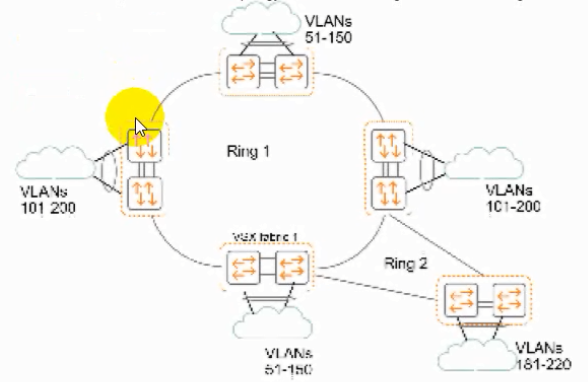At ValidExamDumps, we consistently monitor updates to the HPE2-W09 exam questions by HP. Whenever our team identifies changes in the exam questions,exam objectives, exam focus areas or in exam requirements, We immediately update our exam questions for both PDF and online practice exams. This commitment ensures our customers always have access to the most current and accurate questions. By preparing with these actual questions, our customers can successfully pass the HP Aruba Data Center Network Specialist exam on their first attempt without needing additional materials or study guides.
Other certification materials providers often include outdated or removed questions by HP in their HPE2-W09 exam. These outdated questions lead to customers failing their HP Aruba Data Center Network Specialist exam. In contrast, we ensure our questions bank includes only precise and up-to-date questions, guaranteeing their presence in your actual exam. Our main priority is your success in the HPE2-W09 exam, not profiting from selling obsolete exam questions in PDF or Online Practice Test.
Refer to the exhibit.

which shows the topology tot an Ethernet Ring Protection Switching (ERPS) solution.
Is this a valid design for the control and protected VLANs on the VSX fabric 1 switches?
Solution: Ring 1, instance 1:
control VLAN: 1000protected VLANs: 51-135 Ring l,Instance2:
control VLAN: 1001 protected VLANs: 136-220 Ring 2, Instance 1: control VLAN: 1000 protected VLANs: 181 -200 Ring 2, Instance 2: control VLAN: 1003 protected VLANs: 201 -220
Does this correctly describe Network Analytics Engine (NAE) limitations on ArubaOS-CX switches?
Solution: You can check whether a switch has reached its NAE limitations with the "show capacities-status nae" command.
Your task is to configure an EVPN solution for a dual-stack IPv4 and IPv6 protocol in the overlay networks. Is this statement about EVPN and IPv6 correct?
Solution: The IPv6 and IPv4 overlay networks can be encapsulated with VXLAN and transmitted through the underlay network.
Does this correctly describe how the Virtual Switching Extension (VSX) fabric reacts to various component failure scenarios?
Solution: The keepalive goes down, ISL link remains up. Switch-1 and Switch-2 remains up. The Split-recovery mode is disabled. In this case the secondary switch shutdowns Svls.
An ArubaOS-CX is \ssmq DCBX on Interface 1/1/1. You enter this command:
show dcbx interface 1/1/1
Is this where you can see whether the connected converged network adapter (CNA) has accepted the application priorities advertised with DCBX?
Solution: in the Application Priority Map Local advertisement section